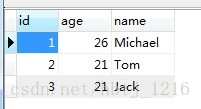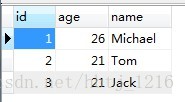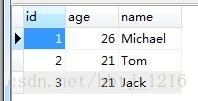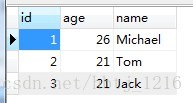SpringBoot版本:2.3.2.RELEASE
SpringBoot Data JPA版本:2.3.2.RELEASE
JpaRepository是SpringBoot Data JPA提供的非常强大的基础接口。
1 JpaRepository
1.1 JpaRepository接口定义
JpaRepository接口的官方定义如下:
@NoRepositoryBean
public interface JpaRepository<T, ID> extends PagingAndSortingRepository<T, ID>, QueryByExampleExecutor<T>
可以看出JpaRepository继承了接口PagingAndSortingRepository和QueryByExampleExecutor。而PagingAndSortingRepository又继承CrudRepository。
因此,JpaRepository接口同时拥有了基本CRUD功能以及分页功能。
当我们需要定义自己的Repository接口的时候,我们可以直接继承JpaRepository,从而获得SpringBoot Data JPA为我们内置的多种基本数据操作方法,例如:
public interface UserRepository extends JpaRepository<User, Integer> {
}
1.2 内置方法
1.2.1 CrudRepository<T, ID>提供的方法
/**
* 保存一个实体。
*/
<S extends T> S save(S entity);
/**
* 保存提供的所有实体。
*/
<S extends T> Iterable<S> saveAll(Iterable<S> entities);
/**
* 根据id查询对应的实体。
*/
Optional<T> findById(ID id);
/**
* 根据id查询对应的实体是否存在。
*/
boolean existsById(ID id);
/**
* 查询所有的实体。
*/
Iterable<T> findAll();
/**
* 根据给定的id集合查询所有对应的实体,返回实体集合。
*/
Iterable<T> findAllById(Iterable<ID> ids);
/**
* 统计现存实体的个数。
*/
long count();
/**
* 根据id删除对应的实体。
*/
void deleteById(ID id);
/**
* 删除给定的实体。
*/
void delete(T entity);
/**
* 删除给定的实体集合。
*/
void deleteAll(Iterable<? extends T> entities);
/**
* 删除所有的实体。
*/
void deleteAll();
1.2.2 PagingAndSortingRepository<T, ID>提供的方法
/**
* 返回所有的实体,根据Sort参数提供的规则排序。
*/
Iterable<T> findAll(Sort sort);
/**
* 返回一页实体,根据Pageable参数提供的规则进行过滤。
*/
Page<T> findAll(Pageable pageable);
1.2.3 JpaRepository<T, ID>提供的方法
/**
* 将所有未决的更改刷新到数据库。
*/
void flush();
/**
* 保存一个实体并立即将更改刷新到数据库。
*/
<S extends T> S saveAndFlush(S entity);
/**
* 在一个批次中删除给定的实体集合,这意味着将产生一条单独的Query。
*/
void deleteInBatch(Iterable<T> entities);
/**
* 在一个批次中删除所有的实体。
*/
void deleteAllInBatch();
/**
* 根据给定的id标识符,返回对应实体的引用。
*/
T getOne(ID id);
JpaRepository<T, ID>还继承了一个QueryByExampleExecutor<T>,提供按“实例”查询的功能。
2 方法测试
下面对以上提供的所有内置方法进行测试,给出各方法的用法。
首先定义实体类Customer:
package com.tao.springboot.hibernate.entity;
import lombok.Data;
import lombok.NoArgsConstructor;
import lombok.NonNull;
import lombok.RequiredArgsConstructor;
import javax.persistence.Entity;
import javax.persistence.GeneratedValue;
import javax.persistence.GenerationType;
import javax.persistence.Id;
@Entity
@Table(name = "tb_customer")
@Data
@NoArgsConstructor
@RequiredArgsConstructor
public class Customer {
@Id
@GeneratedValue(strategy = GenerationType.AUTO)
@Column(nullable = false)
private Long id;
@Column(nullable = false)
private String name;
@Column(nullable = false)
private Integer age;
}
然后定义接口CustomerRepository:
package com.tao.springboot.hibernate.repository;
import com.tao.springboot.hibernate.entity.Customer;
import org.springframework.data.jpa.repository.JpaRepository;
public interface CustomerRepository extends JpaRepository<Customer, Long> {
}
接下来对各个方法进行测试~
2.1 save
/**
* 保存一个实体。
*/
<S extends T> S save(S entity);
测试代码:
@GetMapping("/customer/save")
public Customer crudRepository_save() {
// 保存一个用户michael
Customer michael = new Customer("Michael", 26);
Customer res = customerRepository.save(michael);
return res;
}
测试结果:
2.2 saveAll
/**
* 保存提供的所有实体。
*/
<S extends T> Iterable<S> saveAll(Iterable<S> entities);
测试代码:
@GetMapping("/customer/saveAll")
public List<Customer> crudRepository_saveAll() {
// 保存指定集合的实体
List<Customer> customerList = new ArrayList<>();
customerList.add(new Customer("Tom", 21));
customerList.add(new Customer("Jack", 21));
List<Customer> res = customerRepository.saveAll(customerList);
return res;
}
测试结果:
2.3 findById
/**
* 根据id查询对应的实体。
*/
Optional<T> findById(ID id);
测试代码:
@GetMapping("/customer/findById")
public Customer crudRepository_findById() {
// 根据id查询对应实体
Optional<Customer> customer = customerRepository.findById(1L);
if(customer.isPresent()) {
return customer.get();
}
return null;
}
测试结果:
2.4 existsById
/**
* 根据id查询对应的实体是否存在。
*/
boolean existsById(ID id);
测试代码:
@GetMapping("/customer/existsById")
public boolean crudRepository_existsById() {
// 根据id查询对应的实体是否存在
return customerRepository.existsById(1L);
}
测试结果:
2.5 findAll
/**
* 查询所有的实体。
*/
Iterable<T> findAll();
测试代码:
@GetMapping("/customer/findAll")
public List<Customer> crudRepository_findAll() {
// 查询所有的实体
List<Customer> customerList = customerRepository.findAll();
return customerList;
}
测试结果:
2.6 findAllById
/**
* 根据给定的id集合查询所有对应的实体,返回实体集合。
*/
Iterable<T> findAllById(Iterable<ID> ids);
测试代码:
@GetMapping("/customer/findAllById")
public List<Customer> crudRepository_findAllById() {
// 根据给定的id集合查询所有对应的实体,返回实体集合
List<Long> ids = new ArrayList<>();
ids.add(2L);
ids.add(1L);
List<Customer> customerList = customerRepository.findAllById(ids);
return customerList;
}
测试结果:
2.7 count
/**
* 统计现存实体的个数。
*/
long count();
测试代码:
@GetMapping("/customer/count")
public Long crudRepository_count() {
// 统计现存实体的个数
return customerRepository.count();
}
测试结果:
2.8 deleteById
/**
* 根据id删除对应的实体。
*/
void deleteById(ID id);
测试代码:
@GetMapping("/customer/deleteById")
public void crudRepository_deleteById() {
// 根据id删除对应的实体
customerRepository.deleteById(1L);
}
测试结果:
删除前~~
删除后~~
2.9 delete(T entity)
/**
* 删除给定的实体。
*/
void delete(T entity);
测试代码:
@GetMapping("/customer/delete")
public void crudRepository_delete() {
// 删除给定的实体
Customer customer = new Customer(2L, "Tom", 21);
customerRepository.delete(customer);
}
测试结果:
删除前~~
删除后~~
2.10 deleteAll(Iterable<? extends T> entities)
/**
* 删除给定的实体集合。
*/
void deleteAll(Iterable<? extends T> entities);
测试代码:
@GetMapping("/customer/deleteAll(entities)")
public void crudRepository_deleteAll_entities() {
// 删除给定的实体集合
Customer tom = new Customer(2L,"Tom", 21);
Customer jack = new Customer(3L,"Jack", 21);
List<Customer> entities = new ArrayList<>();
entities.add(tom);
entities.add(jack);
customerRepository.deleteAll(entities);
}
测试结果:
删除前~~
删除后~~
2.11 deleteAll
/**
* 删除所有的实体。
*/
void deleteAll();
测试代码:
@GetMapping("/customer/deleteAll")
public void crudRepository_deleteAll() {
// 删除所有的实体
customerRepository.deleteAll();
}
测试结果:
删除前~~
删除后~~
2.12 findAll(Sort sort)
/**
* 返回所有的实体,根据Sort参数提供的规则排序。
*/
Iterable<T> findAll(Sort sort);
测试代码:
@GetMapping("/customer/findAll(sort)")
public List<Customer> pagingAndSortingRepository_findAll_sort() {
// 返回所有的实体,根据Sort参数提供的规则排序
// 按age值降序排序
Sort sort = new Sort(Sort.Direction.DESC, "age");
List<Customer> res = customerRepository.findAll(sort);
return res;
}
测试结果:
格式化之后发现,确实是按照age的值降序输出的!!!
2.13 findAll(Pageable pageable)
/**
* 返回一页实体,根据Pageable参数提供的规则进行过滤。
*/
Page<T> findAll(Pageable pageable);
测试代码:
@GetMapping("/customer/findAll(pageable)")
public void pagingAndSortingRepository_findAll_pageable() {
// 分页查询
// PageRequest.of 的第一个参数表示第几页(注意:第一页从序号0开始),第二个参数表示每页的大小
Pageable pageable = PageRequest.of(1, 5); //查第二页
Page<Customer> page = customerRepository.findAll(pageable);
System.out.println("查询总页数:" + page.getTotalPages());
System.out.println("查询总记录数:" + page.getTotalElements());
System.out.println("查询当前第几页:" + (page.getNumber() + 1));
System.out.println("查询当前页面的集合:" + page.getContent());
System.out.println("查询当前页面的记录数:" + page.getNumberOfElements());
}
测试结果:






















